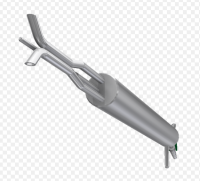








A pitot tube is a pressure measurement instrument used to measure fluid flow velocity. The pitot tube was invented by the French engineer Henri Pitot in the early 18th century and was modified to its modern form in the mid-19th century by French scientist Henry Darcy.It is widely used to determine the airspeed of an aircraft, water speed of a boat, and to measure liquid, air and gas velocities in industrial applications. The pitot tube is used to measure the local velocity at a given point in the flow stream and not the average velocity in the pipe or conduit.
The basic pitot tube consists of a tube pointing directly into the fluid flow. As this tube contains fluid, a pressure can be measured; the moving fluid is brought to rest (stagnates) as there is no outlet to allow flow to continue. This pressure is the stagnation pressure of the fluid, also known as the total pressure or (particularly in aviation) the pitot pressure.
Pitot tubes on aircraft commonly have heating elements called pitot heat to prevent the tube from becoming clogged with ice. The failure of these systems can have catastrophic consequences, as in the case of Austral Líneas Aéreas Flight 2553, Birgenair Flight 301 (investigators suspected that some kind of insect could have created a nest inside the pitot tube: the prime suspect is the black and yellow mud dauber wasp), Northwest Airlines Flight 6231, Aeroperú Flight 603 (blocked static port), and of one X-31.The French air safety authority BEA said that pitot tube icing was a contributing factor in the crash of Air France Flight 447 into the Atlantic Ocean.In 2008 Air Caraïbes reported two incidents of pitot tube icing malfunctions on its A330s.
In industry, the velocities being measured are often those flowing in ducts and tubing where measurements by an anemometer would be difficult to obtain. In these kinds of measurements, the most practical instrument to use is the pitot tube. The pitot tube can be inserted through a small hole in the duct with the pitot connected to a U-tube water gauge or some other differential pressure gauge for determining the velocity inside the ducted wind tunnel. One use of this technique is to determine the volume of air that is being delivered to a conditioned space.
The fluid flow rate in a duct can then be estimated from:
Volume flow rate (cubic feet per minute) = duct area (square feet) × velocity (feet per minute)
Volume flow rate (cubic meters per second) = duct area (square meters) × velocity (meters per second)
In aviation, airspeed is typically measured in knots.
In weather stations with high wind speeds, the pitot tube is modified to create a special type of anemometer called pitot tube static anemometer.